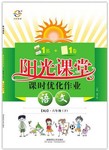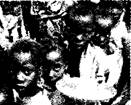题目内容
第三部分:阅读理解(共20小题,每小题2题,满分40分)
阅读下列短文,从每题所给的四个选项(A,B,C,和D)中,选出最佳选项。
Who says Americans worship the almighty dollar? It’s not true.Having enough free time is more important to most Americans than being rich, according to a new poll.
Only 13 percent of more than 2,400 people questioned in the telephone poll ranked being wealthy as most important to them, while 67 percent ranked free time as their top priority, higher than having a successful career, getting married, and having children."Everyone wants free time to do the things they want to do, young, middle-aged or old," said Richard Morin, of the Pew Social & Demographic Trends Project, which conducted the survey."So our desire to play unites us."
The poll also showed that people who were university educated valued career success over wealth, as middle-aged people did.Not surprisingly, those who didn't have money, ranked wealth very highly.This included minorities, first generation Americans and less educated people.The survey also revealed that a disproportionate (不成比例的) number of people under the age of 30 and retirees in the group made $ 20,000 or less a year.But the emphasis on wealth lessens with age, with younger people putting value on it but hardly any seniors."It just diminishes with time as the reality sets in that you would never be rich," Morin said."But also, the reality sets in that you don't have to be rich to lead a very comfortable and fulfilling life."
While wealth was not at the top of people' s list of priorities, 43 percent still said it was somewhat important.
56.The poll showed that the majority of American people ranked ____ as the most important.
A.wealth B.a successful career
C.marriage D.free time
57.Who cares least for wealth, according to the passage?
A.Young people. B.Middle-aged people.
C.Old people. D.Well-educated people.
58.The underlined word "diminishes" in the third paragraph probably means "____".
A.to increase B.to decrease C.to change D.to stay
小题1:D
小题2:C
小题3:B

练习册系列答案
 阳光课堂课时优化作业系列答案
阳光课堂课时优化作业系列答案
相关题目
 tudy builds on work that is shifting the health promotion focus from purposeful exercise, such as running, to lower intensity activities throughout the day.
tudy builds on work that is shifting the health promotion focus from purposeful exercise, such as running, to lower intensity activities throughout the day.
 t_____.
t_____. 0 percent of college students do not know how to prevent AIDS.
0 percent of college students do not know how to prevent AIDS. ly does this make it easier to pick up other languages and have a better memory of one’s own, we have also seen musicians are able to pick out exactly what others are feeling just by the tones of their voices—sympathy, disappointment, that kind of things.”
ly does this make it easier to pick up other languages and have a better memory of one’s own, we have also seen musicians are able to pick out exactly what others are feeling just by the tones of their voices—sympathy, disappointment, that kind of things.” th non-musicians, __________.
th non-musicians, __________. ssing
ssing